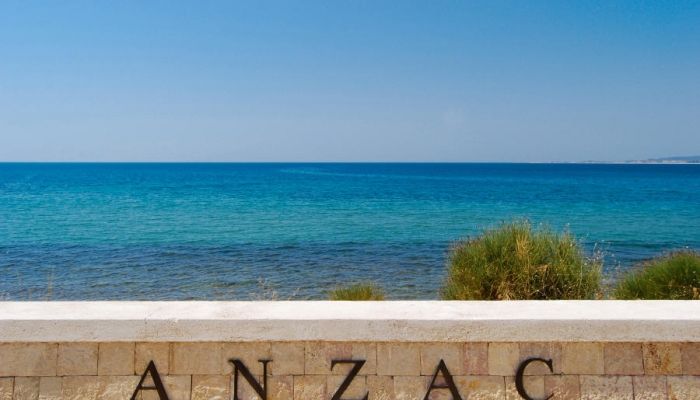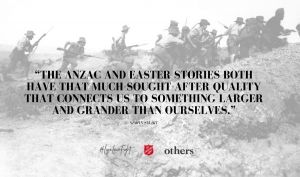From Anzac Cove to Calvary
21 April 2021

The Western hunger for spirituality
Words Simon Smart
A few years ago, I stood in the early-morning light of a brilliantly clear day above the aqua waters at Anzac Cove, the stillness and rugged beauty of the place somehow making a fitting contrast to the murderous blood-soaked soil we all know it once to have been. Around me were scores of young Australians and Kiwis whose backpacking adventures had drawn them along a well-worn path from various European festivals to Istanbul and on to the hostels of the Gallipoli peninsula.
It has to be said that some of this crowd included the loud ‘Australian on tour’, best avoided. But on that sparkling morning, a spell appeared to come over even the most obnoxious travellers as all became silent before the memorials and graves carrying disturbingly familiar-sounding names in such a foreign and faraway place. Most found somewhere to wander silently on their own. Even big blokes swallowed hard and wiped away tears. It was an extraordinary thing to witness and I’m told the same thing happens daily on what many consider to be sacred ground.

Both Anzac Day and Easter are rich in a deeply embedded symbolism, evoking the gravity of what is being remembered, and the tradition that it seeks to pass on. Both events have their sceptics and revisionist historians who scoff at what they see as lavish and contrived myths, or draw mixed emotions from those whose experiences can’t help but cloud their feelings for what is being recalled. And the truth is that many regard both these marks on the calendar as nothing more than a good excuse for a holiday.
The connections don’t stop there. Both days emerge from a story and a past that, for many, has the power to tell us who we are. The Good Friday part of Easter shares with 25 April the darkness of political betrayal, treachery, dashed hopes, young life cut short; more of a sense of the absence of God than his presence. Soldiers who have known the hell of war can relate more than most to the desolate ‘Good Friday’ cry from the cross that the Gospels report Jesus to have exclaimed, “My God, My God, why have you forsaken me?” It’s a deeply human cry that has echoed through the ages.
The Anzac and Easter stories both have that much-sought-after quality that connects us to something larger and grander than ourselves. Both tell of the ultimate sacrifice – the giving of a life for another. War memorials are frequently adorned with the old King James Version of John chapter 15, verse 13 – words that can stir the imagination of even the most hardened cynic, “Greater love hath no man than this, that a man lay down his life for his friends.”
Also held in common is the ever-present fear, especially among older generations, that the story will be lost, that we somehow need to cling to it but don’t know how. Alan Seymour’s classic Australian play, The One Day of the Year, depicts the shock and outrage of an old digger when his son tells him he’s ‘not going to the dawn service’, but would rather sleep in on that one day that they had always shared.
Yet strangely, the young seem not to have abandoned the commemoration of Anzac Day. Dawn services will again be filled with all ages (in many parts of Australia) this year and the lure of a pilgrimage to Gallipoli appears not to have abated. Was the same true of churches this Easter?
Biblical scholar and former Bishop of Durham Tom Wright argues that hunger for spirituality remains a driver for Westerners, although these days it manifests itself in many and varied ways. He suggests that spirituality is like a hidden spring bubbling up from beneath and penetrating the materialism of the West that has dominated thinking for so long. Is this partly what we see played out on Anzac Day?
Simon Smart is the Executive Director of the Centre for Public Christianity. This article first appeared on the Centre's website.

Comments
No comments yet - be the first.